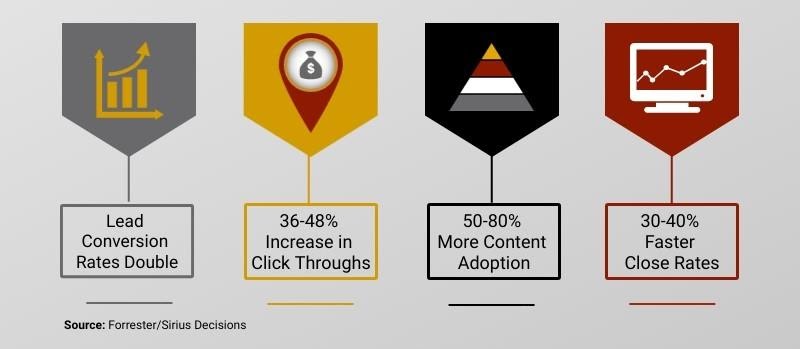 I’ve seen this question posed to several of the industry’s most renowned marketing experts, but I have never heard a really good answer. The differences between B2B and B2C remain mysterious – so much so that marketers rarely cross from one side to the other during their careers.
I’ve seen this question posed to several of the industry’s most renowned marketing experts, but I have never heard a really good answer. The differences between B2B and B2C remain mysterious – so much so that marketers rarely cross from one side to the other during their careers.
Some believe that buyer personas, which are helping to shift the B2B industry’s attention to the people who make corporate buying decisions, will have the additional benefit of blurring the distinctions that have locked so many marketers into their original career path.
If this attitude helps marketers expand their job options, this is probably a good thing. However, I believe the logic is faulty.
That’s because a marketer’s role and contribution is not distinguished by the company’s focus on B2B or B2C solutions, but by the degree of “consideration” a buyer gives to the decision the marketer wants to influence. For the most part, B2C products are “low-consideration” decisions, where branding plays a major role in the buyer’s choice, while B2B products tend to be “high-consideration” decisions where buyers need specific information before they commit.
The fact that levels of buyer consideration so frequently align with industries might explain the longstanding divide between B2B and B2C marketing. But there are exceptions, and the interest in buyer personas is amplifying the need for a more nuanced view.
A simple example of a low-consideration decision is the B2C buyer’s impulsive purchase of a new type of magazine or candy at the checkout counter. On the opposite end of the consideration scale, however, B2C buyers make relatively high-consideration decisions when they invest in a home, major appliance, retirement plan, or private school for their children. A mid-range B2C buying decision might involve planning for an upcoming vacation.
Note that this same person may have a job where she invests weeks, months, or even years on a team that is evaluating a new technology solution for her company. She also makes relatively low-consideration B2B decisions about sending members of her team to an industry conference.
I’m not saying that brand is irrelevant to buyers of high-consideration solutions, or that information is unimportant to buyers of low-consideration products. Instead, I am suggesting that there is an enormous difference in the weight that buyers give to these factors, and that this has a huge impact on expectations and investments in marketing.
By thinking about the following two factors, it is fairly easy to understand where your product, service or solution fits on your buyer’s continuum of “consideration.” Think about:
- Your buyers’ investment in weighing alternative approaches and making a choice
- Your buyers’ opinion about the financial, operational and/or personal consequences of making the wrong decision
This distinction is important for buyer personas because marketers of low-consideration products can improve their marketing and branding decisions by identifying “personal” buyer attributes such as gender, age, hobbies, marital status, income levels, commuting patterns, and so forth.
However, marketers of high-consideration products, services, and solutions are justifiably perplexed about how to use buyer personas that focus only on the buyer’s personal or demographic details. These marketers, whether B2B or B2C, need insight into the information needs of a targeted group of buyers as they make the decision to purchase their product, a competitor’s, or to do nothing at all. That’s where the Five Rings of Insight are essential to the marketer’s success.
Levels of buyer consideration also impact the marketer’s options for building buyer personas. Because we know that buyers of low-consideration products cannot reliably explain their own choices, these marketers will need to invest in sophisticated research by third-party professionals.
On the other hand, buyers of high-consideration products can and will tell you exactly how and why they made a recent decision. Marketers who learn how to conduct a uniquely structured but unscripted conversation with these buyers can uncover critical details that the buyer has not yet shared with anyone. These invaluable insights are the foundation of competitive and effective messaging, content marketing, segmentation and sales enablement for high consideration solutions.
I’ll give a brief overview of the buyer insights that are essential for marketing high-consideration solutions at an upcoming free webinar, Get More Leads by Identifying and Targeting Your Buyer Personas, with Janet Driscoll Miller, President and CEO of Search Mojo, on November 15, 2012 at 2:00 p.m. ET. I hope you’ll join us.




